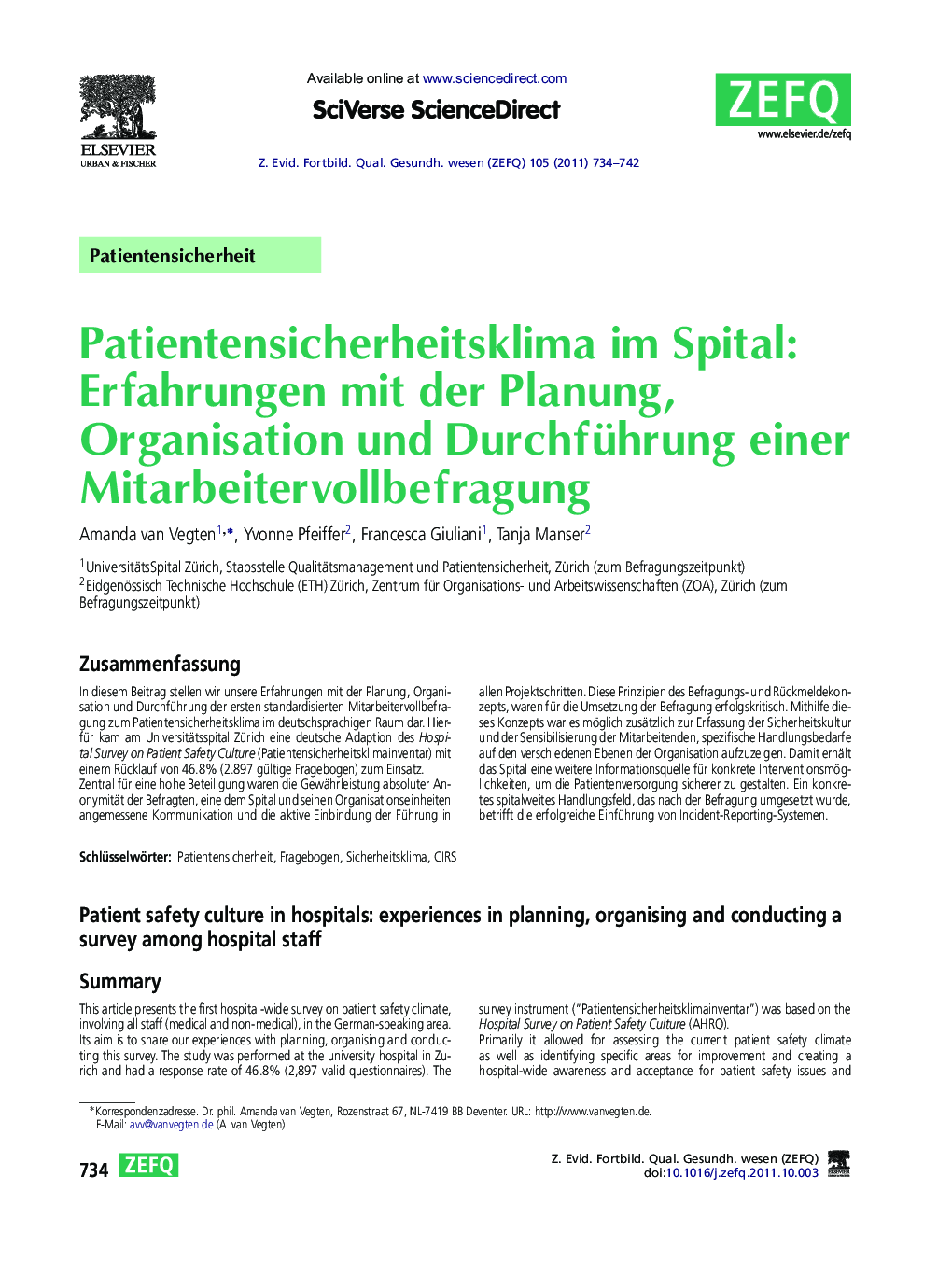| Article ID | Journal | Published Year | Pages | File Type |
|---|---|---|---|---|
| 1095359 | Zeitschrift für Evidenz, Fortbildung und Qualität im Gesundheitswesen | 2011 | 9 Pages |
ZusammenfassungIn diesem Beitrag stellen wir unsere Erfahrungen mit der Planung, Organisation und Durchführung der ersten standardisierten Mitarbeitervollbefragung zum Patientensicherheitsklima im deutschsprachigen Raum dar. Hierfür kam am Universitätsspital Zürich eine deutsche Adaption des Hospital Survey on Patient Safety Culture (Patientensicherheitsklimainventar) mit einem Rücklauf von 46.8% (2.897 gültige Fragebogen) zum Einsatz.Zentral für eine hohe Beteiligung waren die Gewährleistung absoluter Anonymität der Befragten, eine dem Spital und seinen Organisationseinheiten angemessene Kommunikation und die aktive Einbindung der Führung in allen Projektschritten. Diese Prinzipien des Befragungs- und Rückmeldekonzepts, waren für die Umsetzung der Befragung erfolgskritisch. Mithilfe dieses Konzepts war es möglich zusätzlich zur Erfassung der Sicherheitskultur und der Sensibilisierung der Mitarbeitenden, spezifische Handlungsbedarfe auf den verschiedenen Ebenen der Organisation aufzuzeigen. Damit erhält das Spital eine weitere Informationsquelle für konkrete Interventionsmöglichkeiten, um die Patientenversorgung sicherer zu gestalten. Ein konkretes spitalweites Handlungsfeld, das nach der Befragung umgesetzt wurde, betrifft die erfolgreiche Einführung von Incident-Reporting-Systemen.
SummaryThis article presents the first hospital-wide survey on patient safety climate, involving all staff (medical and non-medical), in the German-speaking area. Its aim is to share our experiences with planning, organising and conducting this survey. The study was performed at the university hospital in Zurich and had a response rate of 46.8% (2,897 valid questionnaires). The survey instrument (“Patientensicherheitsklimainventar”) was based on the Hospital Survey on Patient Safety Culture (AHRQ).Primarily it allowed for assessing the current patient safety climate as well as identifying specific areas for improvement and creating a hospital-wide awareness and acceptance for patient safety issues and interventions (e.g., the introduction of a Critical Incident Reporting System [CIRS]). We discuss the basic principles and the feedback concept guiding the organisation of the overall project. Critical to the success of this project were the guaranteed anonymity of the respondents, adequate communication through well-established channels within the organisation and the commitment of the management across all project phases.
